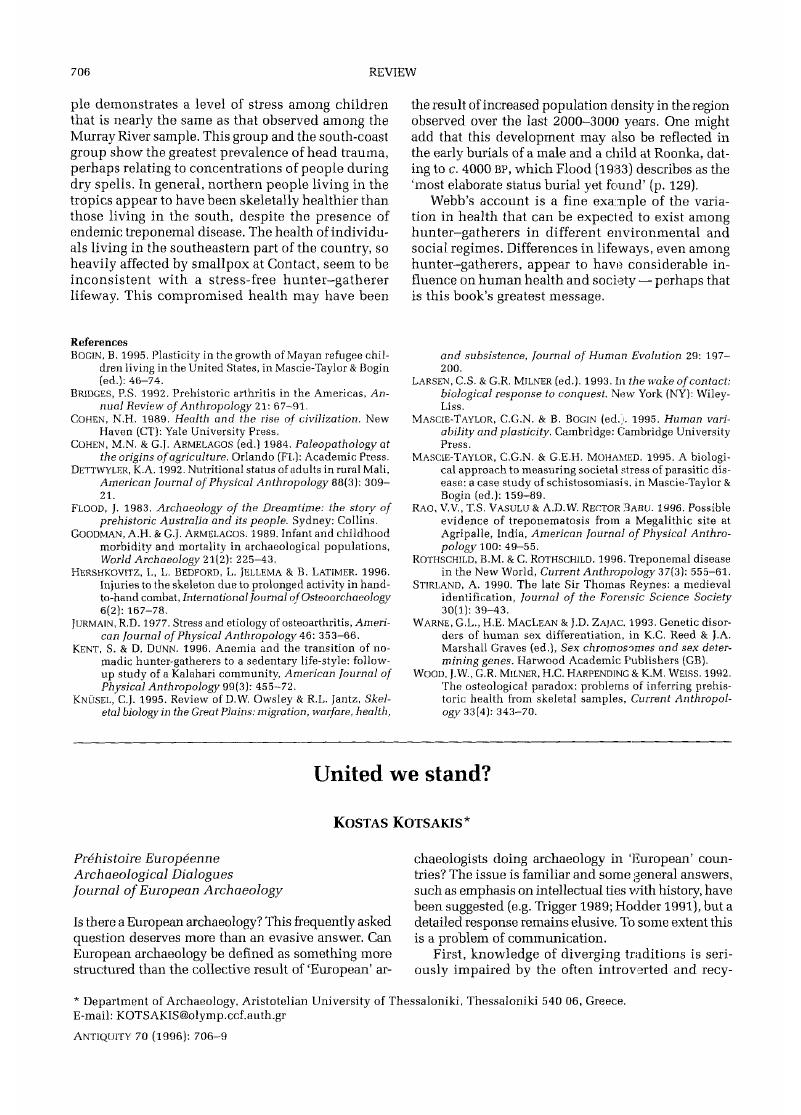No CrossRef data available.
Article contents
United we stand?
Published online by Cambridge University Press: 02 January 2015
Abstract
An abstract is not available for this content so a preview has been provided. Please use the Get access link above for information on how to access this content.

- Type
- Review articles
- Information
- Copyright
- Copyright © Antiquity Publications Ltd. 1996
References
Cleuziou, S., Coudart, A., Demoule, J.-P. & Schnapp, A.. 1991. The use of theory in French archaeology, in Hodder, (ed.): 91–128.Google Scholar
Hodder, I. (ed.). 1991. Archaeological theory in Europe: the last three decades.
London: Routledge.Google Scholar
Olivier, L. & Coudart, A.. 1995. French tradition and the central place of history in the human sciences: preamble to a dialogue between Robinson Crusoe and his Man Friday, in Ucko, (ed.): 363–81.Google Scholar
Trigger, B. G.
1989. A history of archaeological thought.
Cambridge: Cambridge University Press.Google Scholar
Ucko, P. J.
1995a. Introduction: archaeological interpretation in a world context, in Ucko, (ed.): 1–27.Google Scholar
Ucko, P. J. (Ed.). 1995b. Theory in archaeology: a world perspective.
London: Routledge.Google Scholar




